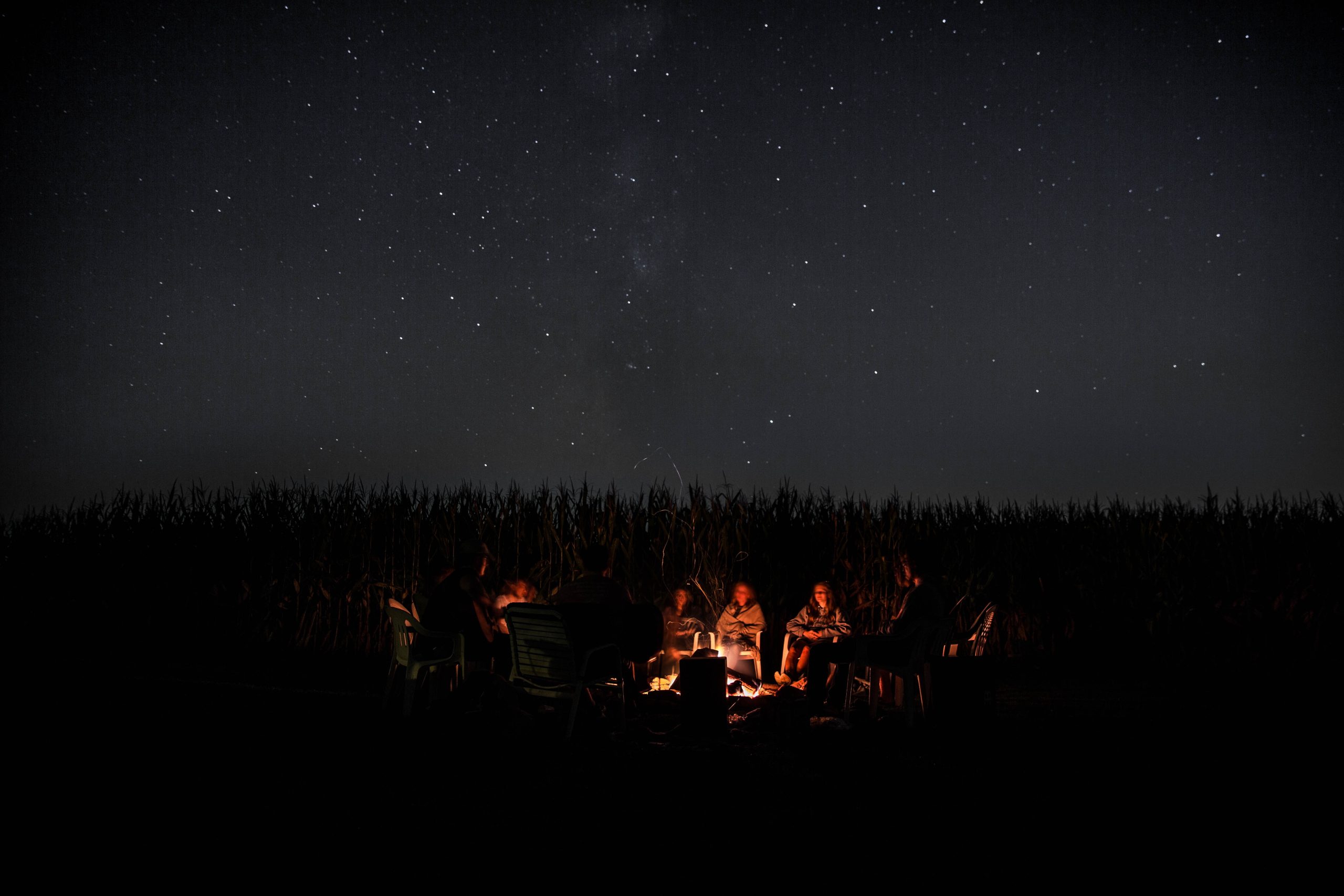Want to enter 2024 with your experience toolbox bursting with new ideas?
Then you’re in luck, as we’ve rounded up some of the essential insights from Season 8 of the WXO Campfires: a series in which we saw magicians, professors, performers and filmmakers share their hard-on wisdom on topics from neuroinclusion to fandoms to positive impact.
Read the round-up here – and don’t miss the start of Season 9 in January 2024. More information on how to join us here.
1. When we build a world, we design who we are.
We’re entering the 4th wave of experience design, where we define what the discipline stands for and what it can do. To achieve this, we need to embrace new worldbuilding tools – and recognise their power in shaping societies, identities, and narratives.
Why it will matter in 2024: Whether we’re designing experiences for an audience of one or to change the course of society, understanding how to build new worlds of possibility is the key to true immersion and transformation.
Find out more from Abraham Burickson, director of Odyssey Works, in Experience Design, A Participatory Manifesto.
2. VR can be used to connect rather than separate people.
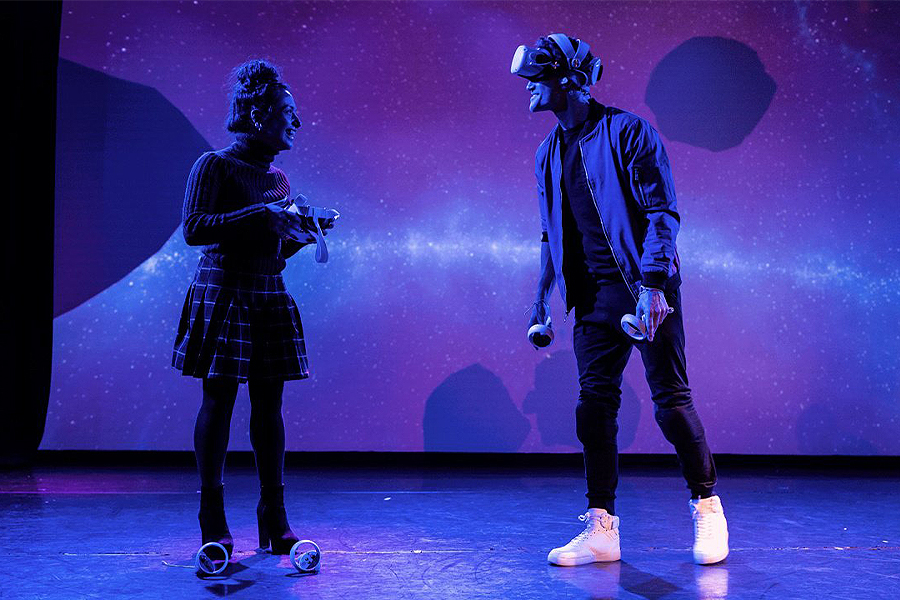
VR might be seen as an inherently isolating medium – but a new vanguard of experience innovators is showing how its boundaries can be stretched to connect performers and audiences around the world. These new VR experiences are more inclusive, and arguably more immersive, than the early experiments of yesteryear.
Why it will matter in 2024: The potential of massive screens to create moments of shared reality without the need for clunky hardware represents one way of breaking away from the isolation of our devices. However, if you can’t be there in person, these kinds of experiences offer another way to connect. It’s all about knowing the right tool to choose for your purpose.
Find out more from Whitton Frank, producer and performer at Ferryman Collective, in Can We Create Intimacy & Vulnerability Through VR?
3. We can activate curiosity not only in ourselves, but in those around us.
Curiosity is a powerful tool in making our experiences more memorable and transformative. There are ways we can encourage it in our audiences, from disrupting their expectations to withholding information and keeping their options open.
Why it will matter in 2024: In a world of information overload, there’s real value in building a “curiosity gap” into your experiences. It keeps people coming back for more, but in a way that invites participation rather than the passive consumption of digital addiction.
Find out more from Pim Schachtschabel, Experience Design Lead at Tellart, in The 6 Tools To Make (& Keep) People Curious.
4. The indirect impact of our experiences might be harder to see, but it can be infinitely more powerful.
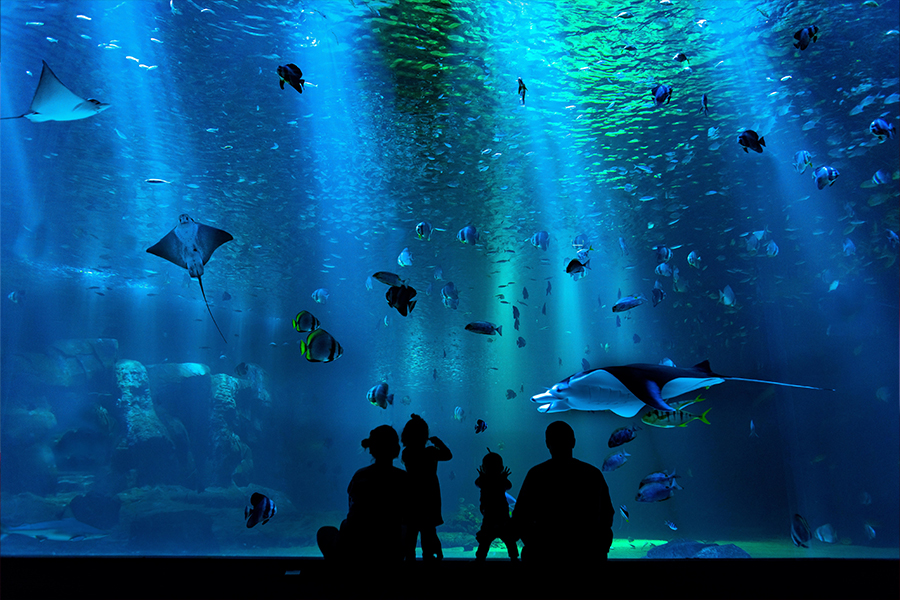
The surge of experiences that aim to have a positive impact on our planet is growing. But beyond the direct impact of our experiences – our carbon footprint, charitable donations, etc – we should be thinking about indirect impact, i.e. creating movements and scaling inspiration. This reaches far beyond the primary participants of our experience.
Why it will matter in 2024: We haven’t seen the end of impactainment or regenerative experiences that seek to change audience behaviour for positive impact on the planet. Impact won’t be an afterthought, but something we build our experiences for.
Find out more from Daniel Hettwer, CEO of Hidden Worlds Entertainment, in Impactainment: How Experiences Might Save The World.
5. If everything else fails, a strong story will pull you through.
Humans love to tell and hear stories, and suspend our disbelief. Even if the finish of your experience isn’t perfect, if you bring people into the story of your experience, this will hold it together.
Why it will matter in 2024: There’s a host of exciting new tech toys for experience designers to experiment with, from AI to XR to game engines. This is a reminder that without a compelling narrative, the technology is pointless – the story comes first, not the tech.
Find out more lessons about failure from the WXO community in 10 Common Mistakes To Learn From In Your Next Experience.
6. If you want your experience to be extraordinary, you need to think about the sequencing of how it unfolds.
When we want to design for transformation, we need to think about how we sequence experiences. What do people need to know and be able to do, so when they come to the experience they can be most impacted? We can provide immersive, amazing experiences, and if people aren’t prepared for them, it can also not move the dial.
Why it will matter in 2024: Frameworks like the Hierarchy of Experiences are just one of the tools that we can use to define and develop our experiences as the practice of experience design becomes more established. It’s complemented by the rise of new measurement tools to track how well these experiments are working.
Find out more from Mat Duerden, Associate Professor, Department of Experience Design and Management, Brigham Young University, in Measuring Extraordinary Experiences In The Real World.
7. To elicit a strong emotional response, learn to “play the hormone piano”.
Our body naturally produces “drugs” that experience designers can play with to create the feeling we want in our audiences. Adrenaline, serotonin, oxytocin, endorphins and dopamine all have different triggers, from physical movement to gamification and sensory stimulation, that will affect how people progress through our experience.
Why it will matter in 2024: The nascent science of neuroaesthetics is uncovering new evidence that explains what experience designers have always known about triggering altered states of being. This knowledge will help us be even more structured in how we create these effects going forward.
Find out more from horror experience experts Michael Badelt and Scott Levkoff in The Joy Of Fear: A W-Hex-O Spooktacular.
8. There are four quadrants to psychological safety, and we need to design for all of them.
Psychological safety is crucial. If we don’t feel psychologically safe, we are not going to engage, interact, or participate. When we feel unsafe, it closes down our brain and we react emotionally. A lot of people shut down, especially those who are neurodivergent. We therefore need to consider these quadrants in order to let people engage, participate and respond to our experiences.
Why it will matter in 2024: As our understanding of neurodivergence and accessibility deepen, inclusive design toolkits are becoming a cornerstone of good experience design.
Find out more from Helen Moon, Founder of Eventwell, in Neuroinclusion & Invisible Space.
9. You can communicate with an audience simply through the power of gesture, eye contact, touch and other non-verbal cues.
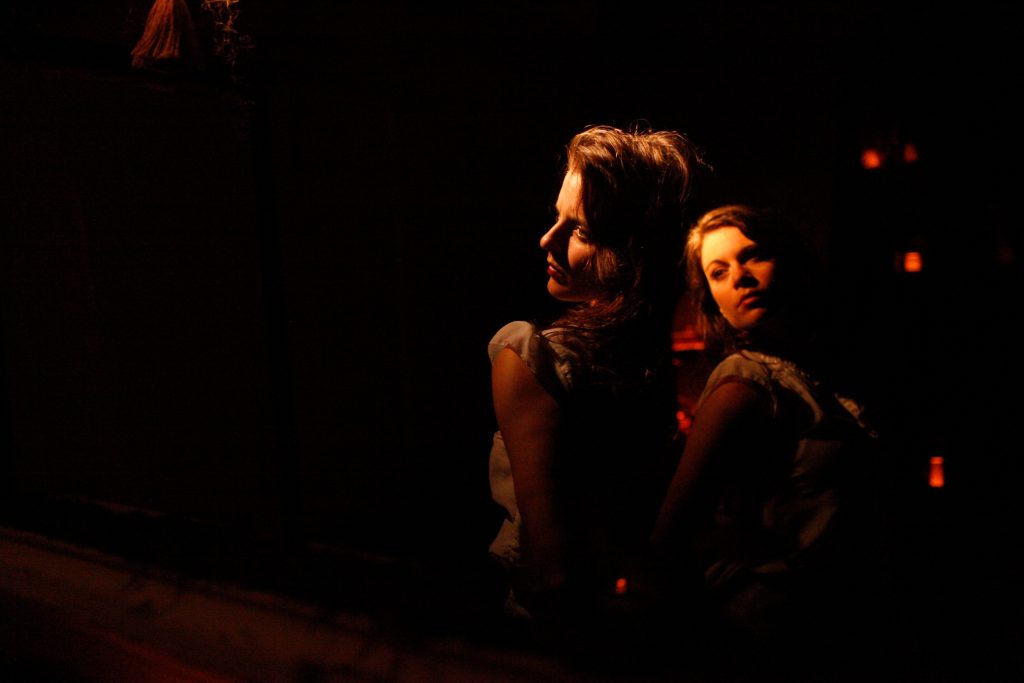
The audience’s physical presence within our experience matters as much as their intellectual presence. Many of the tools we can use to engage on this level are so small and simple that we might not even notice them in everyday life, but can be very powerful when deployed thoughtfully in the context of a performance.
Why it will matter in 2024: As intimate, small-scale performances and audience participation continue to grow in popularity, what remains unsaid and is communicated at a somatic level will be as important as what we communicate verbally.
Find out more from Marisa Nielsen-Pincus, Associate Artistic Director at Third Rail Projects, in Somatic Practice For Experience Designers.
10. You can create magical moments by using “belief-discordant aliefs”.
An “alief” is something that people believe in automatically, such as their fear of heights. You can take this concept and create belief-discordant aliefs: the idea that when you have a belief and an alief and they contradict each other, you can create a magical moment. This is one of many tricks we can borrow from magic design.
Why it will matter in 2024: We’ll continue to flock to experiences that question our identity and our sense of what we know to be true. By getting audiences to question their automatic beliefs, we’re engaging in this identity play.
Find out more from The Void’s Curtis Hickman in Magic Design: The Missing Ingredient In Many Experiences.
11. Forget FECs: we’re entering the era of MULEs.
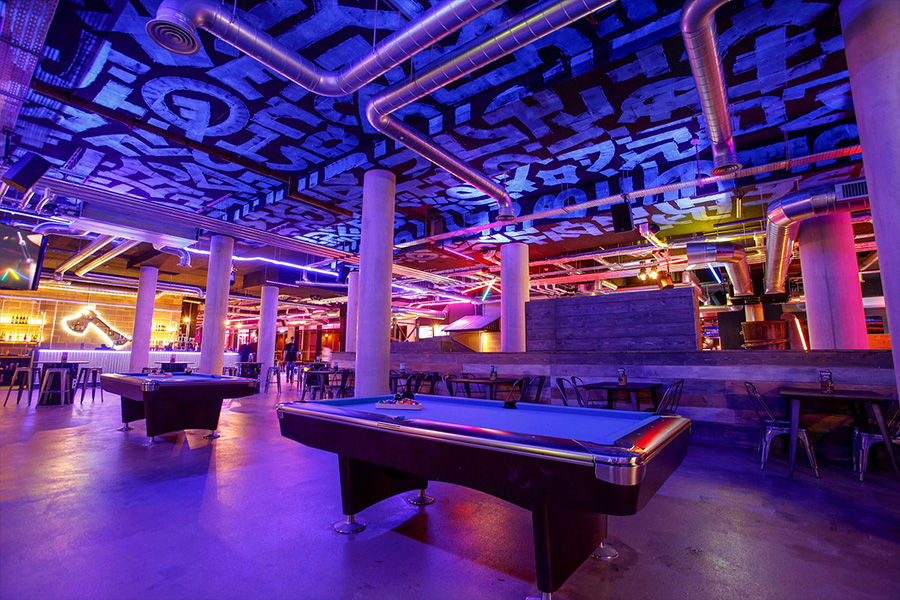
Social entertainment venues, or Mixed Use Leisure Entertainment, offer a different experience to Family Entertainment Centers (FECs). They’re not aimed at children and parents, but more young adults, teenagers and “kidults”, and are often not family friendly, especially if there’s alcohol involved. Perhaps they might use “sunsetting” and digital tweaks to change the environment from kid-friendly in the morning to adults-only after dark.
Why it will matter in 2024: Social entertainment venues are big business and are seeing major investment not only from F&B brands, who have deep pockets after Covid, but also in retail – see LeisurUp in Cannes,, the expansion of British brands like Puttshack and Flight Club into the US, and the proliferation of the genre in new territories across the world, such as Holey Moley in Australia.
Find out more from specialist consultant Kevin Williams in Social Entertainment: The Immersive Adventure.
12. AI can be used to supplement and expand human creativity, not diminish it.
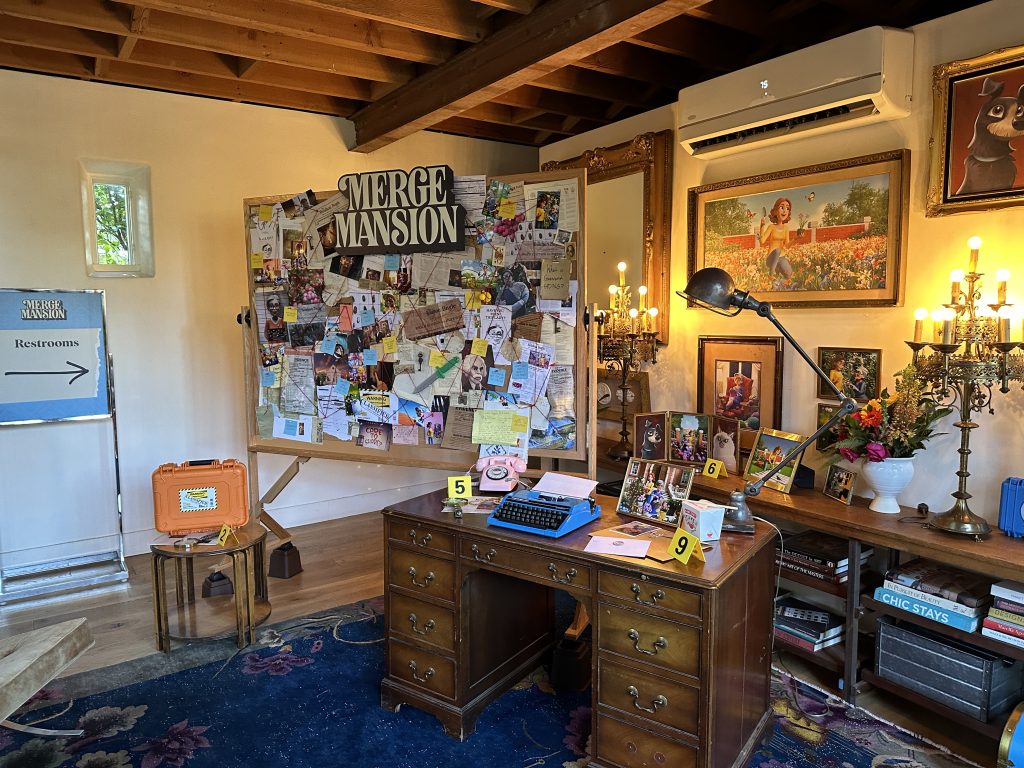
While we’re still working out the ethics of how to apply them, the use of new tools such as generative AI to create new depths of detail demonstrates that there’s still massive potential for them to augment, rather than diminish, human creativity – think using Midjourney or ChatGPT to embellish in-world graphics and narratives, or AI voice manipulation to allow for engagement with story characters.
Why it will matter in 2024: The AI genie is out the bottle. Rather than fearing its impact on our work, these kinds of projects are a blueprint for how we might forge a more positive blend of human and artificial intelligence.
Find out more from Kali Heitholt, Senior Creative Director at Jack Morton Worldwide, and Jarrett Lantz and Jeff Leinenveber, Co-Creative Directors at Scout Expedition Co, in Lore, Simulcra, And Extending Mobile Games IRL.
13. It’s possible to transform spaces and create a compelling narrative with minimal time and budget.
Necessity is the mother of invention, and experiences are no exception. Being adaptable, resourceful and leaning on imagination rather than perfection can be just as effective worldbuilding tools as having mega budgets and state-of-the-art tech, as Frances Vieras Blanc and Brendan Brown found in two recent projects.
Why it will matter in 2024: Whatever budgets you have to work with in the coming year, it’s a reassuring reminder that conjuring magic from the basics is at the core of brilliant experience design, and there’s always a solution if you know where to look.
Find out about more inspiring projects from the WXO community in 5 Experience Passion Projects.
14. Design for your “skimmers” first, and your “dippers and divers” will follow.
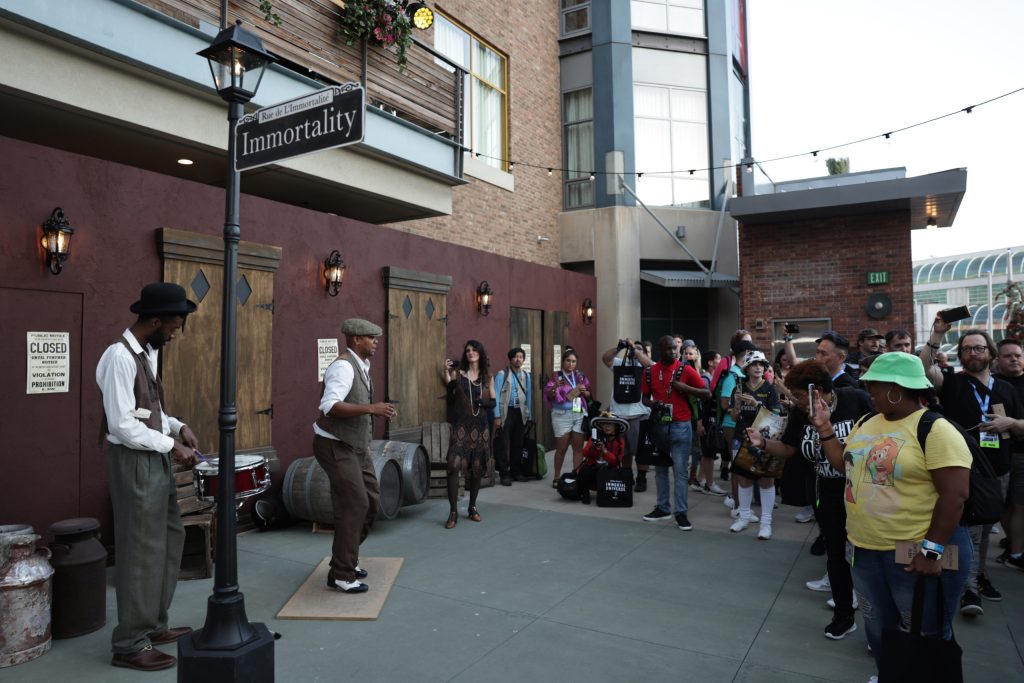
People don’t experience things the same way. By designing for a scale of “skimmers” (least engaged, i.e. novices) to “divers” (most engaged, i.e. superfans), we’re allowing for multiple entry points into our experience. And when in doubt, start by designing for skimmers: this will provide the best way into the narrative for everyone.
Why it will matter in 2024: The Experience Revolution is gaining speed at different paces in different regions. While some experience consumers are now very sophisticated and have expectations to match, others are relatively new and need more primary experiences. Experience consumer engineering like this helps us speak to both.
Find out more from Mike Monello, Co-Founder/Creative Director of Campfire, in How To Design Experiences For Fans & Superfans.
15. You might not be able to guarantee icon status for your experience, but you can certainly increase your chances.
Guaranteeing icon status might be impossible, as whether it gets called iconic ultimately lies in the hands of the audience, not the creator. However, designing for the ingredients that might lead to icon status – cultural relevance, story, passion, ritual, originality, bravery – seems to us like no bad thing.
Why it will matter in 2024: If you produce something iconic, you can create a cultural moment that ripples through people’s crowded psyches and impacts them deeply. And if you’re culturally and commercially successful, it paves the way for future experiments: it becomes easier to both sell tickets and sell ideas to potential clients. Something we could all do more with in 2024!
Find out more crowd-sourced wisdom from the WXO community in 7 Ways To Make An Iconic Experience In 2024.
Want to come to live Campfires and join fellow expert experience creators from 39+ different countries as we lead the Experience Revolution? Season 9 of the WXO Campfires starts in January 2024 – find out more here.

